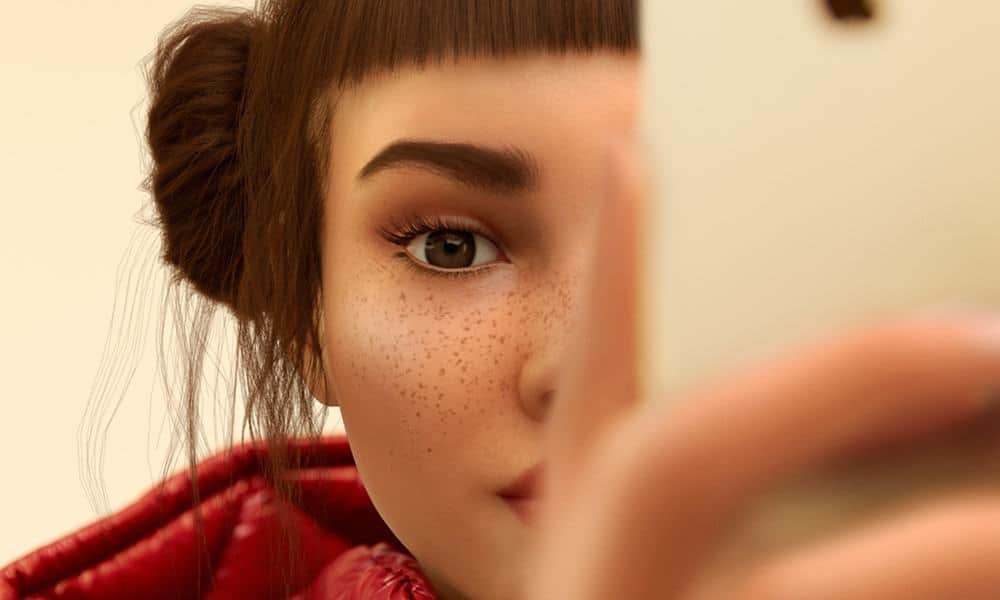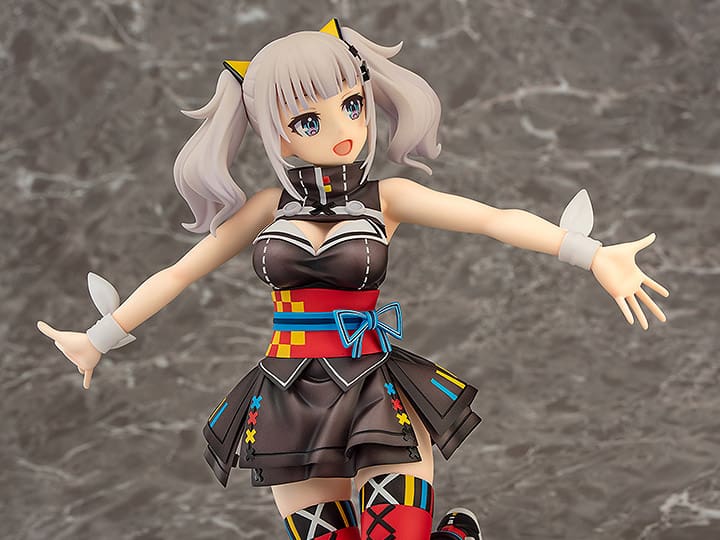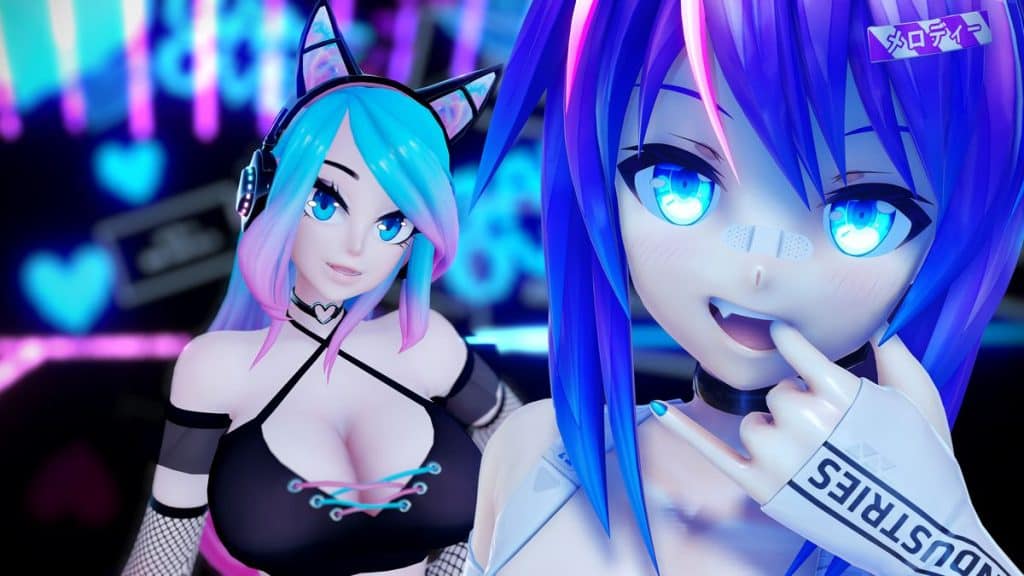The answer to the question of are VTubers fake really depends on what you consider “real”.
We would hope that most people understand that a cutesy anime girl who plays video games is not real in the sense that, to our knowledge at least, anime girls don’t exist in the real world.
On the other hand, it is entirely possible that there is a real girl who really plays video games behind that virtual YouTube account. So, yes, it depends on what you mean when you say “real”.
Unfortunately, this also muddies the waters somewhat, since there are so many different ways to run a virtual YouTube channel and so many different types of virtual YouTuber. It would be near-impossible to make a definitive statement about all virtual YouTubers, so, in this post, we’re going to highlight a few different types of virtual YouTuber, discuss what being fake in that context might mean, as well as ways you might spot a fake virtual YouTuber where applicable.
We will also talk about whether a given virtual YouTuber being fake should be a problem.
Are VTubers Fake? – VTubers are virtual avatars or personas for online influencers who may not want to show their real identity. Some are powered by real people and some are controlled by businesses. So, are they fake as human beings – Yes. Are they fake as digital intellectual property – No.
Types of Virtual YouTuber
In this section, we are not going to be focusing on the types of virtual YouTuber in the sense of how they look or how they are created, as we have done in other posts.
Instead, we are going to look at the kind of virtual personality that is presented, and we will give you an example or two for you to compare notes with.
For each type, we will explore the ways in which they could be fake, as well as ways you might spot this fakeness.
The Camera-Shy Virtual YouTuber
This type of virtual YouTuber is typically someone who doesn’t want to be on camera for one reason or another but has opted to put a virtual avatar in their place to give you something to look at.
The thing that distinguishes this kind of virtual YouTuber from a character virtual YouTuber is that they are not presenting themselves as something other than what they are.
Whether they are giving commentary, tutorials, or anything else, they will be presenting the channel as themselves; they are just doing it with some visual aids to make things more interesting.
From a conceptual standpoint, there is no difference between this kind of YouTuber and a YouTuber who does not have an on-screen presence at all, such as someone who gives commentary over video clips.
The digital avatar is just a means to assist the YouTuber in not being on camera. They may want to avoid being on camera because they are camera-shy, they may have privacy concerns about showing their face, they could even be concerned about a backlash from the content they make and want to keep their identity separate from their YouTube account.
How Might This Kind of Virtual YouTuber be Fake?
To answer this question, we’re going to give you two examples of this kind of YouTuber.
The first is Code Bullet, who makes entertaining videos around the things he gets up with AI. He presents the videos as himself but has an animated on-screen avatar to be his visual presence.
We do not believe there is any way for a channel like this to be fake in any sense that matters.
Code Bullet could lie about his real name, for example, but that would be utterly irrelevant to the content he is making. He could also lie in his videos, perhaps by cooking the results of his AI experiments, and that would be a reason to not watch his content, but it would not be the kind of lie that had anything to do with his digital avatar since he could do that as a regular YouTuber as well. He would be fake, but not a fake virtual YouTuber specifically.
Our second example is It’sAGundam, a commentary channel that covers a variety of topics from Internet drama to strange human-interest stories and more. This YouTuber will often put a digital avatar on-screen to act as the presenter of the content, though, like CodeBullet, they are not acting as a character, but as themselves.
However, like CodeBullet, It’sAGundam cannot really be fake in any meaningful way. They are not claiming to be anything in particular so they can’t lie about it. And, while they could lie about their stories, it would once again not be unique to the fact that they are a virtual YouTuber.
Spotting the Fakery
Since there is no meaningful way to be fake on the virtual side of things for this kind of YouTuber, there is no trick to spotting the fakery.
Things like being dishonest in the content tends to have a way of coming out in time, but the only way you could spot that would be to independently verify what you are saying, such as doing your own research and fact-checking.

The Character Virtual YouTuber
These YouTubers present themselves as real characters, meaning that the channel is run as though the digital avatar on-screen is a real person in much the same way that Kermit the Frog does not break character and reference the fact that he is a puppet.
There is a concern among some that this kind of avatar could be fake in the sense of not being human; that the account is actually a very clever AI. Of course, AIs are not that good… yet. This kind of YouTube channel could not be convincingly run by an AI without giving away its true nature. There is also the reverse version of this where virtual YouTubers that present themselves as an AI have their legitimacy questioned.
For example, AI Angel, a virtual YouTuber who claims to be an AI bot, has had apparently serious conversations about her and whether she is really a bot. As we mentioned, AI bots are not on this level yet. But more importantly, the people who consider her not being a real AI fake, or worry that other virtual YouTubers really are AIs, represent a minority.
Where more of the concerns of fakery lie is in the gender of the person behind the digital mask, though it shouldn’t. Many people seem to be put off by the idea that a virtual YouTuber who is female is being run by a male behind the scenes. In this sense, it is certainly possible for them to be fake, though we would question the importance of that. As a natural consequence of the overwhelming majority of virtual YouTubers being women, the gender of the person running the account tends to be the biggest concern.
Spotting the Fakery
If a virtual YouTuber were really an AI, it would be obvious. Stilted conversation, awkward turning of phrases, and generally not-human-like behaviour. If the virtual YouTuber were playing a character of a different sex (or race or age) and has kept their identity private, there wouldn’t necessarily be a way of finding out. You could listen closely to their voice, but that is an unreliable method as many people can speak convincingly in other voices, and vocal effects are becoming more effective at convincingly changing a voice naturally.
Agency Avatars
One way in which you could consider a virtual YouTuber fake is that there are many of them—especially among the top virtual YouTubers—that are not run by individuals as such but owned by agencies. One of the bigger examples of these agencies Hololive, though there are a lot of them and the number is growing.
There tends to be a desire for community on YouTube, and many viewers prefer their YouTubers to be individuals who they can support, rather than faceless corporations who run a virtual YouTuber production line. In truth, the setup is a little closer to a talent agency than a manufactured pop band. In any case, you can usually find out relatively easily if a virtual YouTuber is part of such an arrangement since the agency will often list the virtual YouTuber on their website.

Always Assume Catfish
Catfishing, for those unfamiliar, is an Internet term used to describe the act of luring someone into an interaction under the pretence of romantic or sexual activity while presenting yourself as something other than you are. There are many ways in which this can happen, but one of the most common examples that springs to mind (if not the most common examples to happen) is that of a middle-aged man pretending to be an attractive young woman and chatting up other men online.
Now, the dynamic with a virtual YouTuber is different, of course; it is not a private, one-on-one interaction. But it helps to keep hold of the thought that any virtual being can—and often will—not be what they seem.
For the most part, this should not be a problem for your enjoyment of the content. If the cutesy anime girl example we gave at the top was run by a middle-aged woman who was not as attractive (in your opinion) as you imagined, it should not take anything away from your love of the channel; the character was always fictional, regardless of who was behind the mask.
So why, you may be asking, are we saying this? Remembering that literally anyone could be behind the digital mask can help to keep you in the right frame of mind to avoid disappointment from the reality of a channel, and prevent you from building something up in your mind that potentially isn’t there. Unless you have good reason to believe otherwise, it is better to assume everything about the virtual YouTuber is fictional.
Should Being “Fake” Matter?
Once again, it is what you mean by fake that determines the answer to this question. After all, we all know that lycra-clad heroes with superpowers don’t exist in the real world, and yet Marvel continues to rake in the money with their movies and comic books. The fact that you know a thing is fake does not necessarily mean it has to ruin your enjoyment of that thing. Rather than fake, think of it as fictional.
You know that the cutesy anime girl is not really an anime girl, but you can enjoy the fictional character in the same way you can enjoy a James Bond movie, or your favourite zombie-based TV show.
Of course, there are other ways to be fake that do affect whether or not you can enjoy the content being produced. For example, a talking head channel that comments on political matters and tends to be quite controversial. If it turned out that the person behind that account did not hold the views they put out and was perhaps just saying controversial things for the views, it would be a huge turn off for many. People don’t mind—in fact, they even enjoy—being lied to when it comes to fictional characters, but they tend to have a deep revulsion to fakeness and hypocrisy in the real world.
Of course, neither of these examples are unique to virtual YouTubers. A regular flesh-and-bone YouTuber is just as capable of being a hypocrite on-camera as a virtual one, just as they are capable of acting a character. Some of the biggest names in entertainment, such as Sacha Baron Cohen and Stephen Colbert, rose to prominence through playing characters on-screen as though they were real people. Ultimately, it is the newness and, frankly, the strangeness of virtual YouTubers that makes people think twice. Once you get over that mental hurdle, many of these questions answer themselves.
Final Thoughts
Hopefully, we’ve shown that the question of whether or not a virtual YouTuber is “fake” is not really a useful one. Even if you have established some ways in which you could consider a virtual YouTuber to be fake, none of them has a significant impact on whether you would watch the channel or not, and the types of fakery that are significant enough to put you off of a channel are rarely specific to virtual YouTubers, but apply to YouTubers in general.
Ultimately, if you enjoy the content a channel puts out, and it is genuine, there is no reason to worry about whether a virtual YouTuber is really a person, really AI, the same age/race/gender as their handler, or anything else superficial that could be called fake.
Top 5 Tools To Get You Started on YouTube
Very quickly before you go here are 5 amazing tools I have used every day to grow my YouTube channel from 0 to 30K subscribers in the last 12 months that I could not live without.
1. VidIQ helps boost my views and get found in search
I almost exclusively switched to VidIQ from a rival in 2020.
Within 12 months I tripled the size of my channel and very quickly learnt the power of thumbnails, click through rate and proper search optimization. Best of all, they are FREE!
2. Adobe Creative Suite helps me craft amazing looking thumbnails and eye-catching videos
I have been making youtube videos on and off since 2013.
When I first started I threw things together in Window Movie Maker, cringed at how it looked but thought “that’s the best I can do so it’ll have to do”.
Big mistake!
I soon realized the move time you put into your editing and the more engaging your thumbnails are the more views you will get and the more people will trust you enough to subscribe.
That is why I took the plunge and invested in my editing and design process with Adobe Creative Suite. They offer a WIDE range of tools to help make amazing videos, simple to use tools for overlays, graphics, one click tools to fix your audio and the very powerful Photoshop graphics program to make eye-catching thumbnails.
Best of all you can get a free trial for 30 days on their website, a discount if you are a student and if you are a regular human being it starts from as little as £9 per month if you want to commit to a plan.
3. Rev.com helps people read my videos
You can’t always listen to a video.
Maybe you’re on a bus, a train or sat in a living room with a 5 year old singing baby shark on loop… for HOURS. Or, you are trying to make as little noise as possible while your new born is FINALLY sleeping.
This is where Rev can help you or your audience consume your content on the go, in silence or in a language not native to the video.
Rev.com can help you translate your videos, transcribe your videos, add subtitles and even convert those subtitles into other languages – all from just $1.50 per minute.
A GREAT way to find an audience and keep them hooked no matter where they are watching your content.
4. PlaceIT can help you STAND OUT on YouTube
I SUCK at making anything flashy or arty.
I have every intention in the world to make something that looks cool but im about as artistic as a dropped ice-cream cone on the web windy day.
That is why I could not live on YouTube without someone like PlaceIT. They offer custom YouTube Banners, Avatars, YouTube Video Intros and YouTube End Screen Templates that are easy to edit with simple click, upload wizard to help you make amazing professional graphics in minutes.
Best of all, some of their templates are FREE! or you can pay a small fee if you want to go for their slightly more premium designs (pst – I always used the free ones).
5. StoryBlocks helps me add amazing video b-roll cutaways
I mainly make tutorials and talking head videos.
And in this modern world this can be a little boring if you don’t see something funky every once in a while.
I try with overlays, jump cuts and being funny but my secret weapon is b-roll overlay content.
I can talk about skydiving, food, money, kids, cats – ANYTHING I WANT – with a quick search on the StoryBlocks website I can find a great looking clip to overlay on my videos, keeping them entertained and watching for longer.
They have a wide library of videos, graphics, images and even a video maker tool and it wont break the bank with plans starting from as little as £8.25 ($9) per month.










